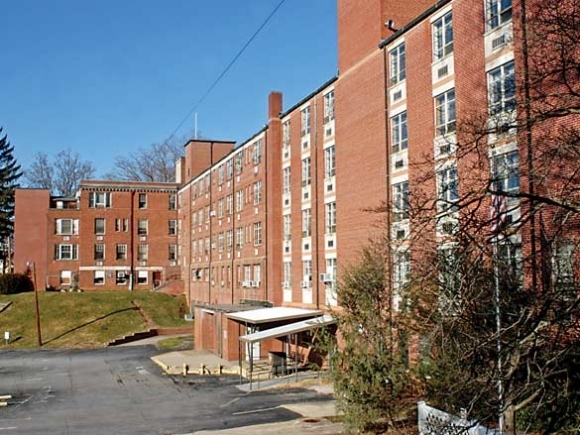Haywood housing task force sets goal, issues recommendations

A strategic plan developed by a subcommittee of the Haywood County Affordable Housing Task Force that proposes 400 affordable housing units by 2028 makes a number of recommendations to help achieve that goal, including the passage of a general obligation bond and the establishment of a land trust.
“The draft strategic plan was received very well by the task force,” said Dona Stewart, Haywood County administrator and co-chair of the affordable housing task force with Mountain Projects’ Patsy Davis.
Repurposing government-owned properties and expanding infrastructure also top the list of suggested solutions to an affordable housing crisis that has gripped the county for some time.
“The plan had a couple of guiding principles,” Stewart said. “One was that we needed to set a specific goal, but we also needed to be flexible enough to take advantage of opportunities that may arise. So we set a specific goal, a recommendation to the commissioners, of 400 units by 2028.”
The Haywood County Affordable Housing Task Force was established by the Haywood County Board of County Commissioners in March 2016, and is charged with creating a strategy to combat the affordable housing crisis after conducting an assessment of both the supply of and demand for affordable housing in the county.
That assessment, released in August 2016, confirmed what was until then only anecdotally suspected — that working-class Haywood County residents have had trouble finding comfortable and cost-effective digs.
Related Items
The U.S. Department of Housing and Urban Development (HUD) defines affordable housing as that which costs no more than 30 percent of an owner’s or renter’s monthly gross income.
Most workers in Haywood County — by far — earn wages from the service sector. According to the N.C. Department of Commerce, the average monthly wage in that sector is $2,444 per month, meaning an affordable 1-bedroom for a sole occupant should run about $814 per month.
Although that price point for rentals isn’t unattainable, it is unaffordable for the approximately 7,000 workers who make less than the county’s 13,000 service sector workers do, including those in the booming leisure and hospitality sector, where gross monthly wages average $1,196.
And it may even be unaffordable for the approximately 12,000 workers employed in every other sector of the economy, all of which earn more on average than the service sector. A dated housing supply, lack of new construction and lack of multi-unit developments that drive down costs for developers are all contributing factors to the situation.
“I think multi-unit development, just for the economies of scale and getting the cost down, is very important so we can truly move into affordable housing model,” said Jim Blyth, a member of the subcommittee that assembled the plan. “We recommended that municipalities and the county look at zoning issues, density issues and public-private partnerships to encourage developers to build multi-family housing.”
The strategy — released for the first time at an AHTF meeting June 9 — recognizes the challenges the county faces in responding to the needs of residents and those hoping to relocate to the area.
Given that Haywood County’s rate of natural population increase is negative, meaning residents aren’t having enough children to replace the elderly who pass away each year, attracting new residents is crucial for the county’s economic growth.
If those prospective residents have nowhere to live, they obviously won’t be moving to Haywood County and paying property taxes; every municipality in the county receives the majority of its yearly revenue from ad valorem property taxes.
The rest of the recommendations, Stewart said, would create the “toolkit” to help develop public-private partnerships and incentivize private development of affordable housing units.
Among the most progressive of those recommendations is the housing trust fund, which could raise concerns from conservatives who might view it as meddling in a highly speculative, highly capitalist market.
According to the plan, the trust fund would provide low-interest loans to developers and could be funded through a sales tax, bond issue or a line item in the county’s general fund.
The plan further suggests that proceeds from the sale of any county-owned land could also make its way into the fund.
The Board of County Commissioners will tentatively consider approval of the plan August 7.
“I think that the reception from the Board of County Commissioners’ liaison [Commissioner Kevin Ensley] and the County Manager [Ira Dove] — they were very receptive of the product, with the understanding that it is a work in progress,” Blyth said.









